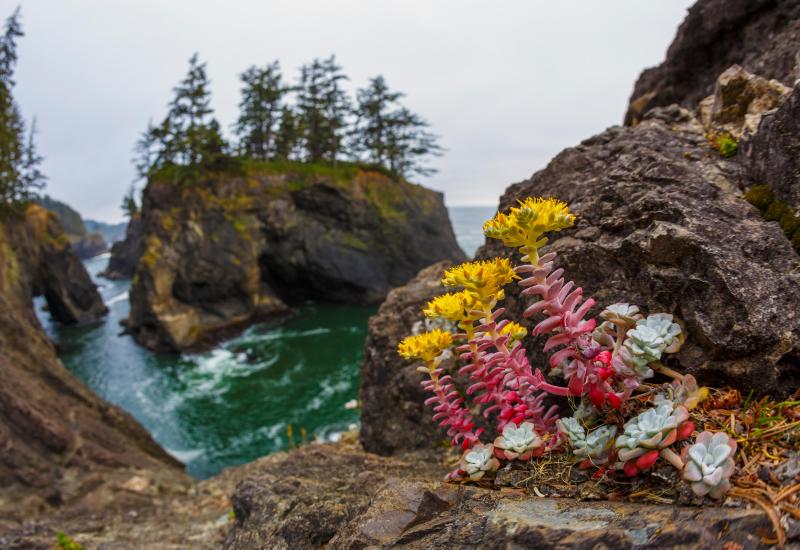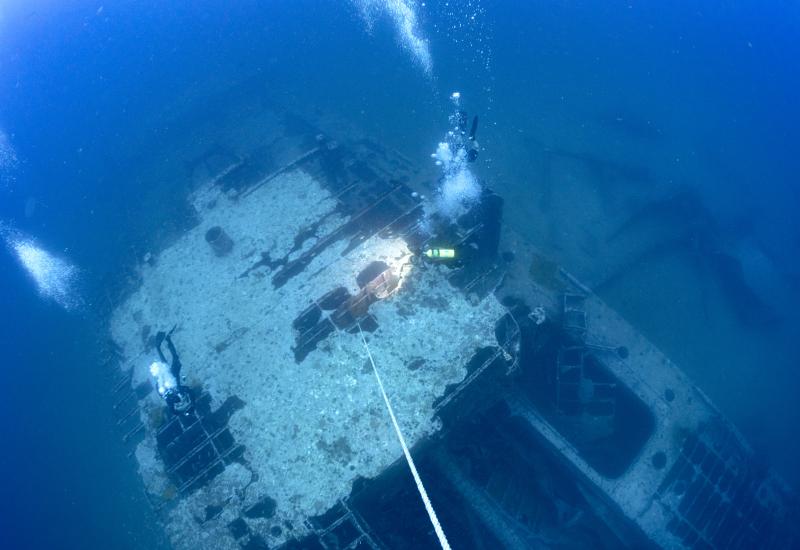Beautiful and Biodiverse Dive Destinations
Planning a trip to one of these unique dive locales? Here’s what you need to know. Featuring insight from locals, tips for timing seasonal experiences, and the scoop on popular dive sites, as well as some lesser-known dives you’ll want on your radar too.
Indonesia
Under the Radar
“Alor is an amazing, underrated dive area,” says Kay Golding, of Mermaid Liveaboards. While vessels have historically only dived the northern part of Alor, Golding says some vessels have recently been able to circumnavigate the islands. She says divers have found Alor’s southern reaches to be spectacular. “It’s a lot like south Komodo, without the traffic,” Golding says, adding that the Alor channel is a migration path for cetaceans.
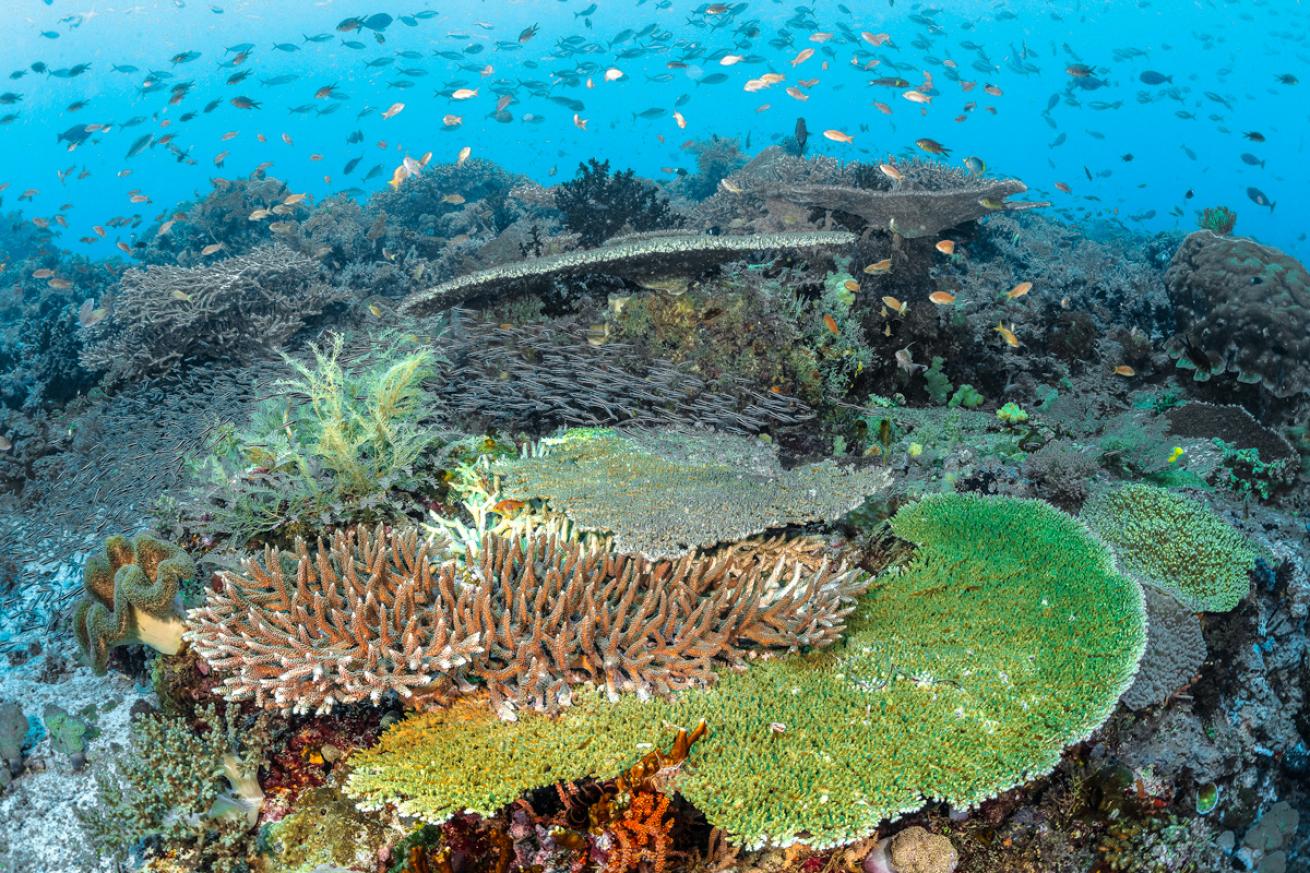
JENNIFER PENNERA reef off Pantar Island in Alor, Indonesia, hums with life.
The Classic Dive
Cape Kri in Raja Ampat’s Dampier Strait is one of the most iconic tropical dive sites in the entire world—and a hotspot for biodiversity. It has everything from shallow coral gardens that are a photographer’s dream to sloping reefs and drop-offs, and it brings in predators in addition to a rainbow array of reef fish and macro delights (think nudibranchs, shrimp and pygmy seahorses galore).
Dive Report
“During one of our recent voyages, we encountered a pod of Bryde’s whales up close and spent some time observing how they swam peacefully through the water,” says Yeray Moreno, of Rascal Voyages. “And during the last voyage, apart from encountering our resident manta rays while diving, we were absolutely thrilled to stumble upon a herd of dugongs in the Dampier Strait.”
We’ve seen a few oceanic mantas on recent trips in Raja Ampat at Cape Kri and Blue Magic,” says Mik Jennings, of Master Liveaboards. “In Misool at Shadow Reef/Magic Mountain, we had an encounter with five dolphins on a recent safety stop.”
Related Reading: How to Throw a Birthday Party for a Coral Reef
Plan a Trip
Manta lovers (does anyone not love mantas?) don’t miss diving in Komodo between May and August, says Antoe Woong, of the Tiare liveaboard. “There’s one dive site called Manta Alley where you will see hundreds of manta rays doing cleaning and feeding,” he says. In Alor from September to November, mola mola delight divers at the site Clown Valley and dugongs are sometimes seen in Kalabahi Bay.
Second-Time Visitor
Jennings points to the Banda Islands in Indonesia’s Maluku Province as having “a rich history in addition to fantastic diving.” Volcanic seamounts here attract large schools of fish and many pelagic species, making for plenty of dream sites for liveaboard diving. Remote locations like the Banda Islands might require additional travel, he says, but they offer unique diving experiences that can’t be found anywhere else in the world. “Plus, the hospitality and willingness to help from the Indonesian people make the journey all the more worthwhile.”
Bonaire
Under the Radar
Bonaire is famous for shore diving, and for good reason, says Jorinde van den Berge, of Dive Friends Bonaire. “But it’s not a bad idea to change it up once in a while and go for a boat dive to sites that aren’t accessible from the shore, like those on Klein Bonaire and some sites on the north and east coast,” she says. Hagen Wegerer, of Plaza Marina and Toucan Diving Watersports, says the dive site Something Special is in a location most people don’t equate with great shore diving—but it nevertheless impresses. “The macro life to be found, even in the shallow sandy areas, makes this a must-dive site during the day or at night.”
The Classic Dive
Yellow rocks with black writing on them mark the way to shore-diving sites around Bonaire, including Karpata, where you can head underwater for reliably good visibility and spectacular scenery. “It’s a very active reef with tons of fish and turtles to see,” says Augusto Montbrun, of dive operator Buddy Dive.
Related Reading: How to Take Your Bonaire Dive Trip to the Next Level
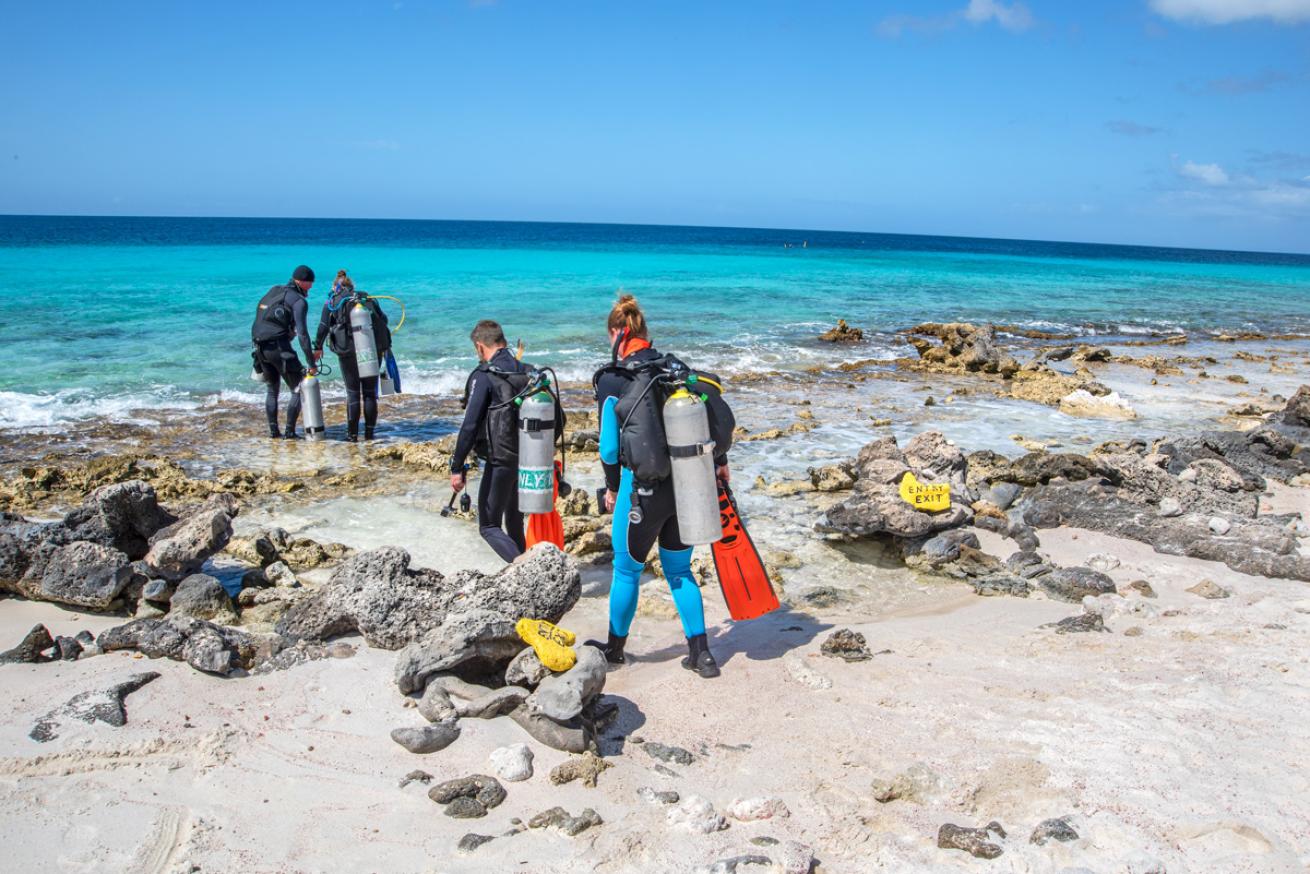
BARRY BROWNPainted rocks mark the entrance to the Hilma Hooker wreck site.
Dive Report
Dive guide Sage Hagan mentions some exciting sightings of late for guests of Bonaire operator VIP Diving. “A tec dive team recently spotted an anchor at depths of 90 to 120 meters at one of the southern dive sites,” he says. And dive guides recently reported seeing a male loggerhead turtle the size of an adult human.
Plan a Trip
“From April to December, we anticipate seeing more loggerhead and hawksbill turtles, which migrate to Bonaire to breed and nest,” says Nicole Pelletier, of VIP Diving.
Second-Time Visitor
On a return visit to Bonaire, prioritize heading underwater on the east side of the island. “It’s a two-tank morning dive adventure with some really spectacular things to see,” Wegerer says, with southern stingrays, eagle rays and large gatherings of green turtles of every size (and sometimes sharks too) often in the mix. “It’s awesome to go to the Washington Slagbaai National Park for a hike or drive through nature,” says Lieke Post, of Dive Friends Bonaire. “In some spots, it’s even possible to snorkel or dive inside the park.”
Antarctica
Under the Radar
Most divers think about the wildlife they’ll see while diving in Antarctica. But there’s so much more to look forward to underwater here, says Edwin Sargeant, a divemaster with Aurora Expeditions, which guides experienced divers to the White Continent. “There is huge biodiversity on a micro level here in Antarctica that surprises people, including plant life, sea stars, plus lots of wildlife,” he says. “There are also shipwrecks and whale bones—there’s a lot to see, and it all depends on the sites we visit.”
The Classic Dive
Ogling an iceberg from an underwater vantage point is the quintessential Antarctic dive experience, says Sargeant. Spotting seals, penguins and whales while diving also tops the wish list of what guests want to see. “You do not get to do this anywhere else in the world,” Sargeant says.
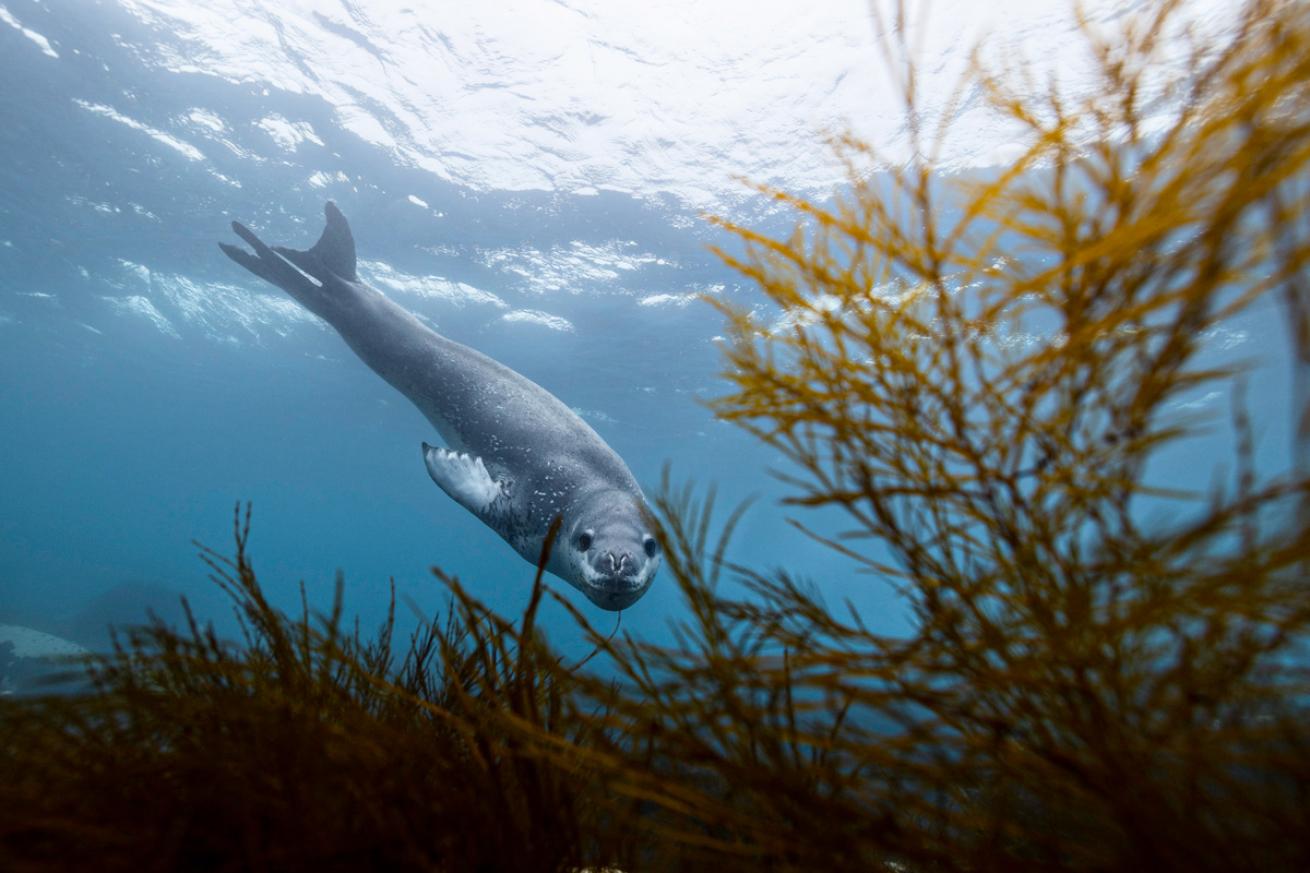
JENNIFER ADLERA leopard seal peers through seaweed at Half Moon Bay, Antarctica.
Dive Report
“We’ve been having encounters with penguins, whales and seals: the big three!” says Sargeant. “It changes from time to time every season, and every month is a different experience. Even week to week the diving can change. That’s the magic of Antarctica.”
Plan a Trip
February and March are the best months to dive in Antarctica, according to Aurora Expeditions, and preparation is key. It’s essential not only to be trained but to have experience with drysuit diving. Plan trips to other cold-water destinations to build up your hours training in a drysuit so you’re comfortable with your gear when you arrive for the cold-water diving trip of a lifetime.
Related Reading: Sea Forests of the South: Searching for Kelp in the Southern Ocean
Second-Time Visitor
“The farther south you go, the more ice, the more extreme and the more picturesque,” says Sargeant. Second-time visitors to the continent generally have specific reasons they want to come back to dive again, he says. “People become more discerning and know what they want.” And since diving in Antarctica is different every time, it’s easy to desire a return as soon as you’ve surfaced from your last dive.

